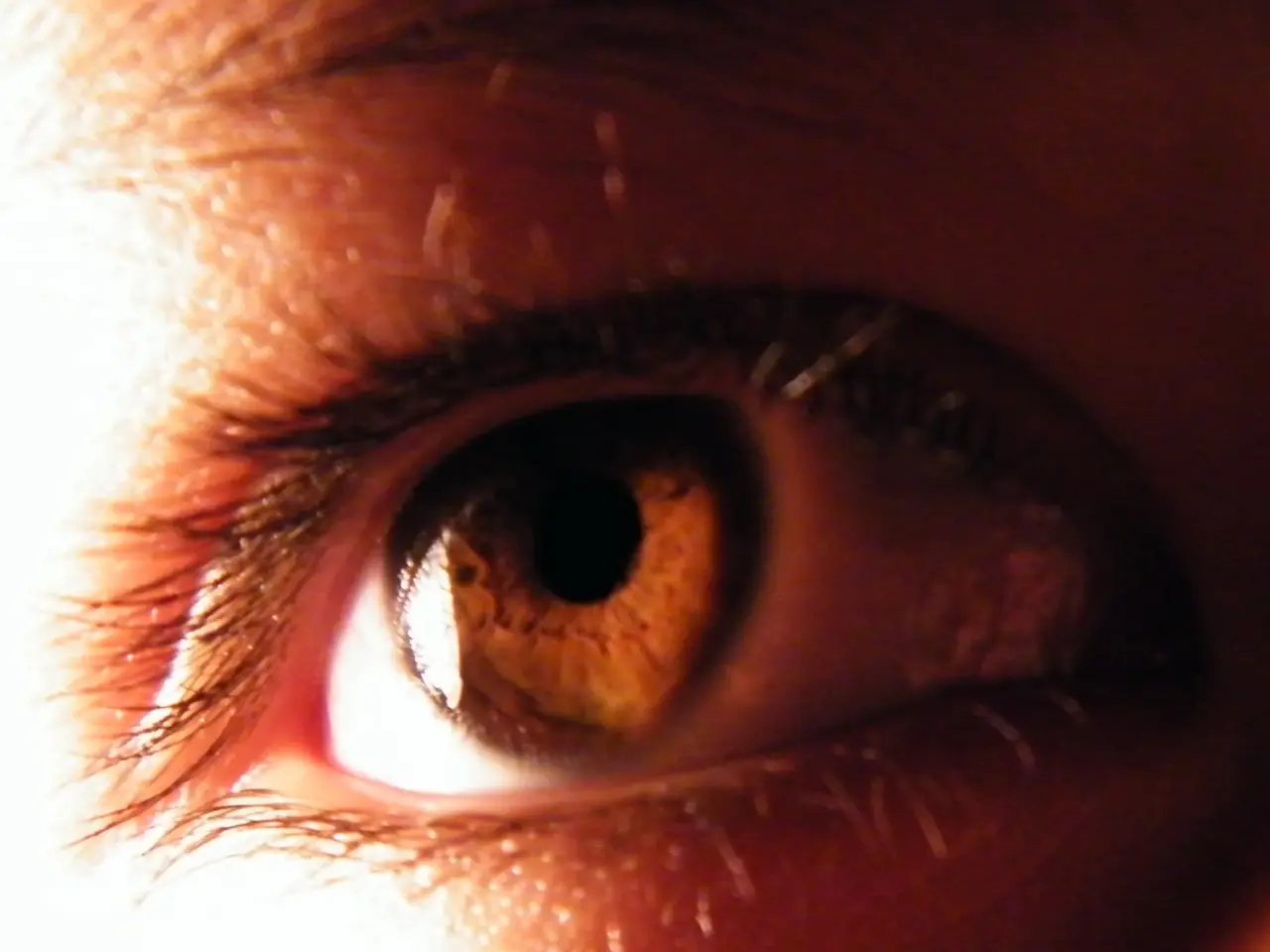Heliotrope rash explanations, including symptoms, images, and remedies
Dermatomyositis, a chronic autoinflammatory disease, is a lesser-known but significant part of a group of muscle diseases called inflammatory myopathies or myositis. This condition, characterised by progressive muscle weakness, skin rashes, and inflammation, affects less than 10 people out of every million.
The development of dermatomyositis is a complex interplay of genetic predisposition, environmental exposures, autoimmune dysregulation, and sometimes medication triggers.
Genetic predisposition plays a significant role, with mutations in several immune-related genes such as PDE4DIP, BRCA2, BCLAF1, KMT2A, KMT2C, and KMT2D frequently detected in patients with dermatomyositis. These genes and their proteins may contribute to the disease's pathogenesis.
Environmental factors like UV light, chemicals, viral infections, and certain medications can increase the risk of dermatomyositis. UV radiation, such as from sunburn, can exacerbate or trigger autoimmune responses that lead to disease development or flares. Ultraviolet light is a documented trigger in related autoimmune conditions.
Dermatomyositis is an autoimmune condition itself, and its onset can be related to immune dysregulation similar to other autoimmune diseases like systemic lupus erythematosus (SLE) and cutaneous lupus erythematosus (CLE), which share overlapping mechanisms involving genetic susceptibility and environmental triggers. Autoimmune activity leads to an aberrant immune response against muscle and skin cells, causing inflammation and the characteristic symptoms.
Certain viral infections have been implicated as triggers, with these infections stimulating immune system activation or molecular mimicry, potentially initiating the autoimmune process in genetically susceptible individuals.
Some medications can trigger or worsen dermatomyositis by inducing allergic or inflammatory reactions. Drugs such as fluoroquinolones, antimalarials, and antiviral medications have been associated with the onset of symptoms in some cases.
Stressful environmental conditions and psychological stress may also contribute to disease onset by affecting immune function. Other risk factors for dermatomyositis include autoimmune disorders, infections, medications, viral infections, unburn or heavy sun exposure, cancer, and a predisposition to autoimmune diseases.
It is crucial to seek medical attention if symptoms of dermatomyositis are present, as proper diagnosis is crucial for ruling out conditions like cancer. If the rash does not disappear, a doctor should be consulted. Prompt treatment can improve outcomes in people with dermatomyositis, making it possible to lead a normal life with minimal muscle weakness.
A heliotrope rash, a reddish purple rash that occurs on or around the eyelids, is a characteristic symptom of dermatomyositis. Although it does not pose a direct threat, it indicates a potentially serious underlying condition. A painful or itchy rash on the eyes should prompt a person to see a doctor promptly.
Diagnosing dermatomyositis can be challenging and may require multiple diagnostic tests such as blood tests, biopsies, imaging tests, nerve conduction, and EMG. Treatment options for dermatomyositis include corticosteroid drugs, immunosuppressants, physical and exercise therapy, devices to support and assist muscles, heat therapy, and complementary therapies.
Women are twice as likely to get dermatomyositis as men, and it is more prevalent among children aged 5 to 10. Dermatomyositis may also damage blood vessels, particularly in children. If left untreated, dermatomyositis can lead to severe muscle weakness, difficulty swallowing, and even respiratory failure.
In summary, understanding dermatomyositis requires recognising its complex interplay of genetic predisposition, environmental exposures, autoimmune dysregulation, and sometimes medication triggers. With early diagnosis and prompt treatment, people with dermatomyositis can lead relatively normal lives with minimal muscle weakness.
- The complexity of dermatomyositis development stems from genetic predisposition, environmental exposures, autoimmune dysregulation, and medication triggers.
- Genes like PDE4DIP, BRCA2, BCLAF1, KMT2A, KMT2C, and KMT2D, which contribute to immune function, are often found mutated in people with dermatomyositis.
- UV light exposure, chemical pollution, viral infections, and certain medications can increase the risk of developing dermatomyositis.
- Dermatomyositis is an autoimmune disease that causes inflammation in muscle and skin cells, similar to other conditions such as systemic lupus erythematosus (SLE) and cutaneous lupus erythematosus (CLE).
- Viral infections can trigger or worsen dermatomyositis by stimulating the immune system or inducing molecular mimicry.
- Some medications, such as fluoroquinolones, antimalarials, and antiviral drugs, can cause allergic or inflammatory reactions, leading to dermatomyositis.
- Stressful environments and psychological stress can contribute to dermatomyositis onset by weakening the immune system.
- Other risk factors for dermatomyositis include autoimmune disorders, infections, unburn or heavy sun exposure, cancer, and a predisposition to autoimmune diseases.
- Prompt medical attention is crucial for proper diagnosis of dermatomyositis, as it may resemble conditions like cancer.
- A characteristic symptom of dermatomyositis is a heliotrope rash, which appears around the eyelids and indicates a potential underlying condition.
- Diagnosing dermatomyositis may require multiple diagnostic tests, including blood tests, biopsies, imaging tests, nerve conduction, and EMG.
- Treatment options for dermatomyositis include corticosteroid drugs, immunosuppressants, physical and exercise therapy, devices to support muscles, heat therapy, and complementary therapies.
- Dermatomyositis affects more women than men, and it is more common in children aged 5 to 10.
- Dermatomyositis can damage blood vessels, particularly in children, leading to severe muscle weakness, difficulty swallowing, and potential respiratory failure if left untreated.
- Science and medical research have made significant strides in understanding chronic diseases like dermatomyositis, psoriasis, obesity, atopic dermatitis, asthma, cancer, HIV, Crohn's disease, spondylitis, lung disease, hepatitis, diabetes, arthritis, eye health, health and wellness, mental health, and skin care.
- A balanced diet and nutrition play a vital role in maintaining overall health and wellness, and they are essential for managing chronic diseases like cancer, diabetes, obesity, and many autoimmune disorders, such as dermatomyositis.




